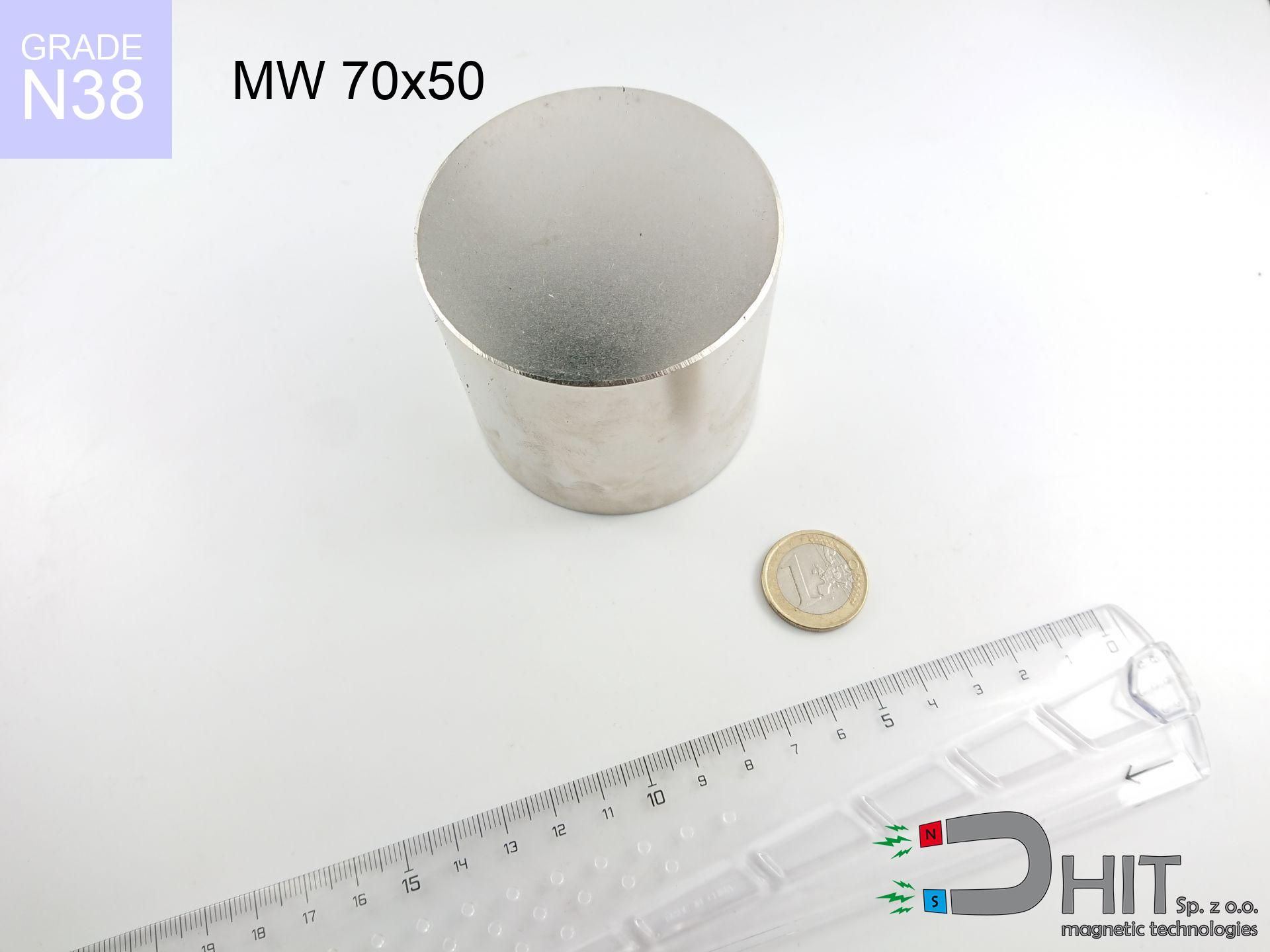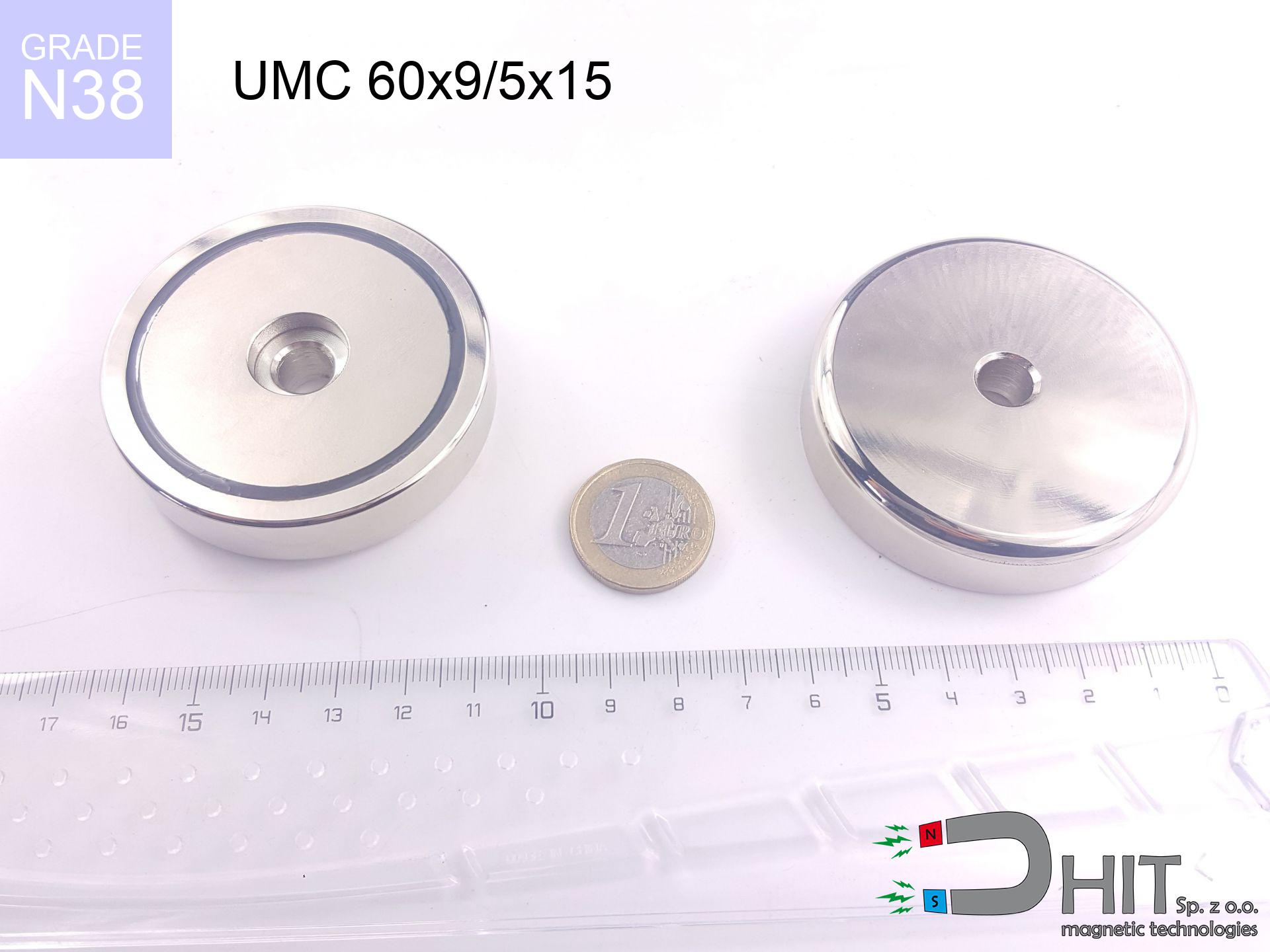UMH 20x7x35 [M4] / N38 - magnetic holder with hook
magnetic holder with hook
Catalog no 310425
GTIN/EAN: 5906301814542
Diameter Ø
20 mm [±1 mm]
Height
35 mm [±1 mm]
Height
7 mm [±1 mm]
Weight
21 g
Magnetization Direction
↑ axial
Load capacity
14.50 kg / 142.20 N
Coating
[NiCuNi] Nickel
8.59 ZŁ with VAT / pcs + price for transport
6.98 ZŁ net + 23% VAT / pcs
bulk discounts:
Need more?
Pick up the phone and ask
+48 888 99 98 98
alternatively let us know through
contact form
the contact section.
Strength along with form of neodymium magnets can be estimated on our
power calculator.
Same-day shipping for orders placed before 14:00.
Physical properties - UMH 20x7x35 [M4] / N38 - magnetic holder with hook
Specification / characteristics - UMH 20x7x35 [M4] / N38 - magnetic holder with hook
| properties | values |
|---|---|
| Cat. no. | 310425 |
| GTIN/EAN | 5906301814542 |
| Production/Distribution | Dhit sp. z o.o. |
| Country of origin | Poland / China / Germany |
| Customs code | 85059029 |
| Diameter Ø | 20 mm [±1 mm] |
| Height | 35 mm [±1 mm] |
| Height | 7 mm [±1 mm] |
| Weight | 21 g |
| Magnetization Direction | ↑ axial |
| Load capacity ~ ? | 14.50 kg / 142.20 N |
| Coating | [NiCuNi] Nickel |
| Manufacturing Tolerance | ±1 mm |
Magnetic properties of material N38
| properties | values | units |
|---|---|---|
| remenance Br [min. - max.] ? | 12.2-12.6 | kGs |
| remenance Br [min. - max.] ? | 1220-1260 | mT |
| coercivity bHc ? | 10.8-11.5 | kOe |
| coercivity bHc ? | 860-915 | kA/m |
| actual internal force iHc | ≥ 12 | kOe |
| actual internal force iHc | ≥ 955 | kA/m |
| energy density [min. - max.] ? | 36-38 | BH max MGOe |
| energy density [min. - max.] ? | 287-303 | BH max KJ/m |
| max. temperature ? | ≤ 80 | °C |
Physical properties of sintered neodymium magnets Nd2Fe14B at 20°C
| properties | values | units |
|---|---|---|
| Vickers hardness | ≥550 | Hv |
| Density | ≥7.4 | g/cm3 |
| Curie Temperature TC | 312 - 380 | °C |
| Curie Temperature TF | 593 - 716 | °F |
| Specific resistance | 150 | μΩ⋅cm |
| Bending strength | 250 | MPa |
| Compressive strength | 1000~1100 | MPa |
| Thermal expansion parallel (∥) to orientation (M) | (3-4) x 10-6 | °C-1 |
| Thermal expansion perpendicular (⊥) to orientation (M) | -(1-3) x 10-6 | °C-1 |
| Young's modulus | 1.7 x 104 | kg/mm² |
Chemical composition
| iron (Fe) | 64% – 68% |
| neodymium (Nd) | 29% – 32% |
| boron (B) | 1.1% – 1.2% |
| dysprosium (Dy) | 0.5% – 2.0% |
| coating (Ni-Cu-Ni) | < 0.05% |
Environmental data
| recyclability (EoL) | 100% |
| recycled raw materials | ~10% (pre-cons) |
| carbon footprint | low / zredukowany |
| waste code (EWC) | 16 02 16 |
Check out also deals
Strengths as well as weaknesses of Nd2Fe14B magnets.
Strengths
- They retain magnetic properties for nearly 10 years – the drop is just ~1% (according to analyses),
- They show high resistance to demagnetization induced by external field influence,
- A magnet with a smooth nickel surface is more attractive,
- The surface of neodymium magnets generates a unique magnetic field – this is a distinguishing feature,
- Due to their durability and thermal resistance, neodymium magnets can operate (depending on the form) even at high temperatures reaching 230°C or more...
- Considering the option of precise shaping and adaptation to specialized solutions, neodymium magnets can be manufactured in a broad palette of shapes and sizes, which expands the range of possible applications,
- Huge importance in modern technologies – they are utilized in mass storage devices, motor assemblies, medical devices, and modern systems.
- Thanks to efficiency per cm³, small magnets offer high operating force, in miniature format,
Limitations
- To avoid cracks under impact, we suggest using special steel housings. Such a solution protects the magnet and simultaneously improves its durability.
- Neodymium magnets decrease their power under the influence of heating. As soon as 80°C is exceeded, many of them start losing their force. Therefore, we recommend our special magnets marked [AH], which maintain stability even at temperatures up to 230°C
- When exposed to humidity, magnets usually rust. For applications outside, it is recommended to use protective magnets, such as those in rubber or plastics, which prevent oxidation as well as corrosion.
- Limited possibility of producing nuts in the magnet and complex forms - recommended is cover - mounting mechanism.
- Potential hazard to health – tiny shards of magnets are risky, in case of ingestion, which is particularly important in the aspect of protecting the youngest. Furthermore, tiny parts of these magnets can disrupt the diagnostic process medical when they are in the body.
- Due to expensive raw materials, their price exceeds standard values,
Holding force characteristics
Optimal lifting capacity of a neodymium magnet – what it depends on?
- using a sheet made of mild steel, serving as a ideal flux conductor
- possessing a massiveness of at least 10 mm to avoid saturation
- with a surface cleaned and smooth
- with direct contact (without coatings)
- for force applied at a right angle (pull-off, not shear)
- at temperature room level
Determinants of lifting force in real conditions
- Clearance – the presence of foreign body (paint, tape, air) acts as an insulator, which lowers capacity rapidly (even by 50% at 0.5 mm).
- Force direction – remember that the magnet has greatest strength perpendicularly. Under shear forces, the capacity drops drastically, often to levels of 20-30% of the maximum value.
- Element thickness – for full efficiency, the steel must be sufficiently thick. Thin sheet limits the lifting capacity (the magnet "punches through" it).
- Chemical composition of the base – mild steel attracts best. Higher carbon content reduce magnetic permeability and holding force.
- Plate texture – smooth surfaces ensure maximum contact, which improves force. Rough surfaces reduce efficiency.
- Operating temperature – NdFeB sinters have a negative temperature coefficient. At higher temperatures they lose power, and at low temperatures they can be stronger (up to a certain limit).
Holding force was measured on the plate surface of 20 mm thickness, when a perpendicular force was applied, in contrast under parallel forces the lifting capacity is smaller. In addition, even a minimal clearance between the magnet’s surface and the plate lowers the holding force.
Safety rules for work with neodymium magnets
Handling rules
Before use, read the rules. Sudden snapping can destroy the magnet or injure your hand. Think ahead.
Choking Hazard
NdFeB magnets are not suitable for play. Eating several magnets can lead to them attracting across intestines, which poses a critical condition and requires immediate surgery.
Precision electronics
Remember: neodymium magnets produce a field that confuses sensitive sensors. Keep a safe distance from your phone, tablet, and navigation systems.
Crushing risk
Pinching hazard: The pulling power is so immense that it can cause hematomas, crushing, and broken bones. Protective gloves are recommended.
Mechanical processing
Fire hazard: Rare earth powder is explosive. Avoid machining magnets without safety gear as this risks ignition.
Electronic hazard
Do not bring magnets near a purse, computer, or screen. The magnetism can destroy these devices and erase data from cards.
Medical implants
Health Alert: Strong magnets can deactivate heart devices and defibrillators. Stay away if you have medical devices.
Power loss in heat
Control the heat. Exposing the magnet to high heat will permanently weaken its magnetic structure and pulling force.
Warning for allergy sufferers
Warning for allergy sufferers: The Ni-Cu-Ni coating contains nickel. If redness happens, immediately stop working with magnets and wear gloves.
Protective goggles
Beware of splinters. Magnets can fracture upon violent connection, launching shards into the air. We recommend safety glasses.

![Holder with hook UMH 20x7x35 [M4] / N38 Holder with hook UMH 20x7x35 [M4] / N38](https://cdn3.dhit.pl/graphics/banners/magnet.webp)
![UMH 20x7x35 [M4] / N38 - magnetic holder with hook](https://cdn3.dhit.pl/graphics/products/umh-20x7x35-m4-hiz.jpg)
![UMH 20x7x35 [M4] / N38 - magnetic holder with hook - ujęcie 2](https://cdn3.dhit.pl/graphics/products/umh-20x7x35-m4-dev.jpg)





